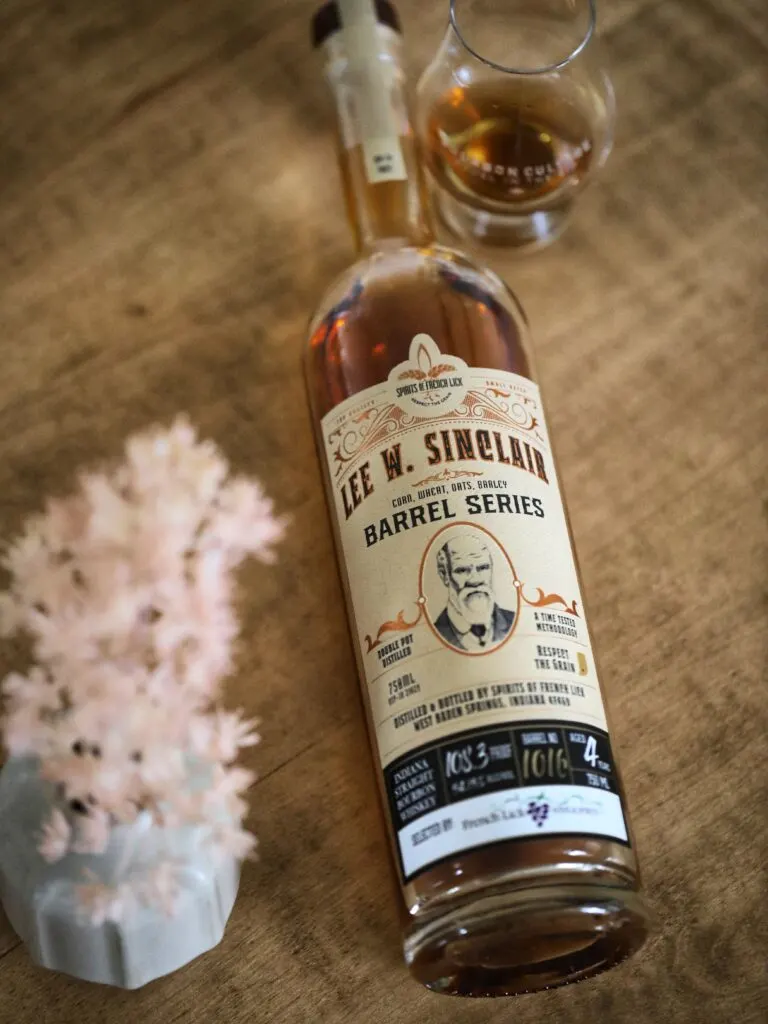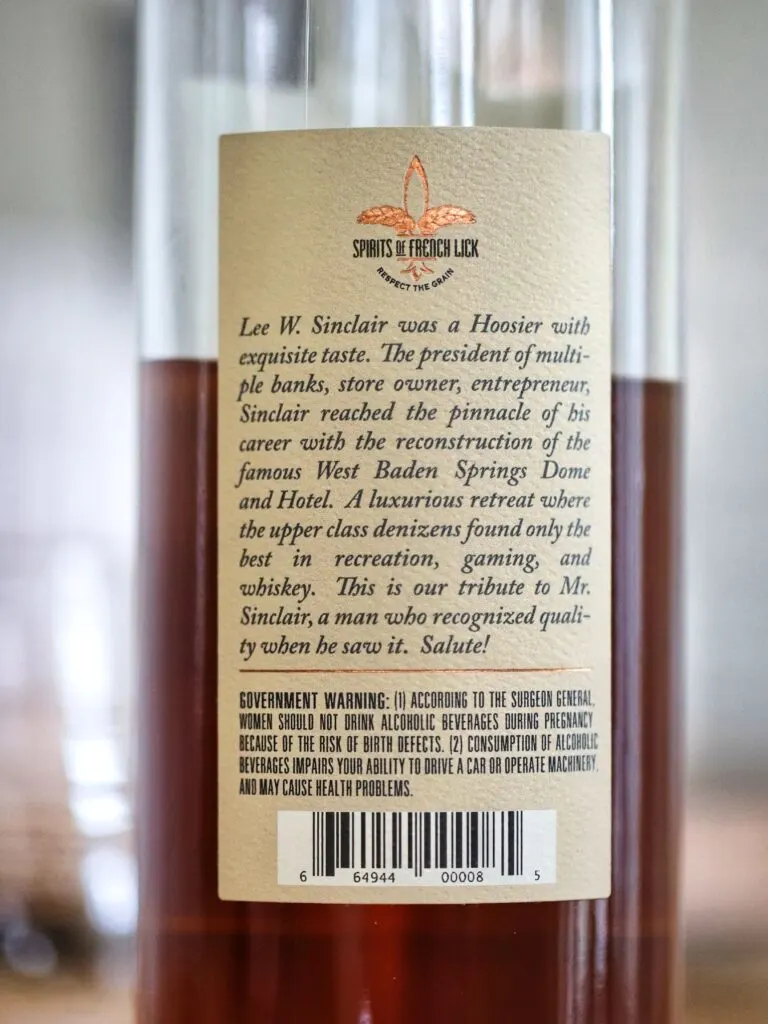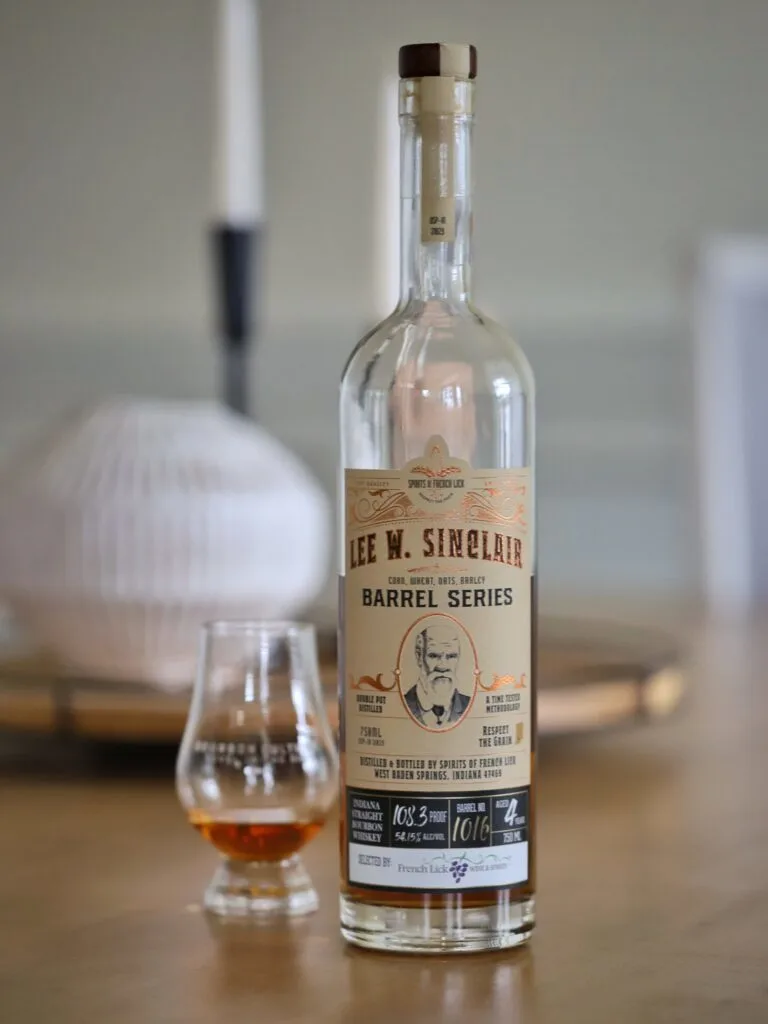| Don't like ads? | No ads |
Out of all the Spirits of French Lick bottles I’ve reviewed, I believe that Lee W. Sinclair would be considered the brand’s flagship.
Others might consider it to be Mattie Gladden due to the fact they were both some of the earliest examples of bourbon that was distilled, aged and bottled all at Spirits of French Lick Distillery.
The reason why I think it’s Lee Sinclair, though, has to do with a conversation I had with Alan Bishop (SoFL founder and head distiller) last summer. But before we get to that, a little context for how the conversation came up…
Spirits of French Lick channels historical distilling practices
Alan is, above all else, a man of history. If you spend even just an hour with him, you’ll walk away with an increased understanding of Southern Indiana and its rich distilling history.
While touring his distillery, which has a very industrial feel to it, you’ll notice that he’s hung up some pictures of early Indiana distilleries.
These photos were taken from the 1800s to early 1900s and show farmers, distillers and the places they practiced their craft (usually a barn). He’ll give you the backstory behind each one too. Many of these characters and their names end up gracing the names of his bottles.

The whiskey distilled at SoFL is designed to be a call-back to some of those early recipes and techniques. This is a subject that Alan really gets excited to speak about if you ask him.
One of the most fascinating things he talked about was how prominent oats were in the distillation of whiskey before the turn of the century. That might catch most people off guard who assume that since corn is the dominant grain in bourbon, that it has always been the dominant grain in American Whiskey.
But corn grown before the Industrial Revolution had lower yields and required much more resources, soil preparation and attention to get good returns.
Farmers weren’t just growing crops to feed their families, they also had to grow grain to feed their livestock. And before the internal combustion engine was part of daily life, it was horses that farmers depended on for farming and transportation.
And what grains do horses eat a majority of? Oats, corn and barley. But oats are more simple to grow and require less nitrogen (in the form of fertilizer) in the soil than corn does. This means that the soil can grow more of it before becoming “tired.” My research showed that oats need about 40 pounds of nitrogen per acre while corn needs 200 pounds per acre if soil types are the same.
Oat Whiskey? Not quite, but close!
So getting back to my point, oats were much more widely grown and available to farmers than we might have thought. This is why a lot of early-American whiskey recipes from Indiana and Kentucky contained them. This was the main reason Alan wanted to put them into his whiskey and why he made Lee W. Sinclair with the mash bill of 60% Corn, 17% Wheat, 13% Oats, and 10% Caramel Malt.

After distillation, Alan typically puts his whiskies in the barrel at low proofs – averaging about 105 proof. The barrels come from Kelvin Cooperage and utilize a #2 Char.
They’re aged in a Chai (pronounced “shay”) Cellar in his warehouse where the temperature is slow to move in either direction resulting in a more even aging process. Later batches that come out around 2024 may be aged in his new metal warehouses he has built directly behind the distillery.
This particular bottle I’m reviewing today was purchased at the distillery gift shop and is a single barrel coming in at 108 proof. Most examples you’ll find in the store are bottled-in-bond. I’m hoping the extra proof will create a better experience overall. So how is it? Time to find out. I sampled this neat in a glencairn.
Tasting Notes
Nose: The nose is fairly young and grainy throughout. If you’ve drank something more refined and mature prior to this, it will smell even younger. There are a lot of malty notes for a whiskey that doesn’t have a large amount of malt in the recipe but it’s also accompanied by orchard fruit scents of pears and apples.
Bubblegum notes might hint to the rye used, but I’m not finding anything particularly “oat-like” that would signal if this unique grain was making an impact or not. Oh, but I do find something similar to dehydrated pineapple pieces that I’m fond of.
Palate: The malty scents from the nose transfer to the palate. It’s strange how it can do that sometimes. Some cornmeal flavors mingle with it too leaving a very grain-forward flavor combo. Caramel helps amp up the sweetness just a bit.
There are more orchard fruit flavors floating around but there are also a lot of off-flavors too. Bitter oak, young sapling wood, charcoal and cardboard all tell me that this barrel was not done aging yet. There’s an astringent background to each of the flavors too. Overall, every nice flavor is accompanied with one I would rather not find.
Finish: The finish saves the session from certain doom. It begins to mellow out, although it’s still somewhat grainy. Caramel sweetness begins to take control while the oak is more subdued and is joined by a bit of tobacco leaf. There’s even a hint of cinnamon spice that hangs on too.
Score: 4.4/10
Lee W. Sinclair is a great concept burdened by a lack of maturity. And while I hate sounding like a broken record with every bottle I review from SoFL, there hasn’t been enough liquid-to-wood interaction to stop the whiskey from tasting this way.
It practically begging to sweat it out in a hot rickhouse, more time in the barrel and barrels with alligator char on the inside. It needs more outside perspective and oversight to tell Alan that yes – these barrels are ready or no – these barrels need more time.
Final Thoughts
Alan has a lot of local support and even Fred Minnick drops him love notes on certain podcasts. Hell, even I like the guy and feel a duty to support his vision since I live in Indiana too. His knowledge and the way he shares it makes you believe he’s making all of the right decisions, but sipping on his whiskey at home without him around to make you feel more invested in it reveals its deficiencies.

I have waited for 3 years now to see if his products are improving and all I keep finding is that they’ve plateau’ed. As I look towards purchasing my final product in the next month or two (which will be Mattie Gladden), I feel as if I’ve conceded that SoFL may not be the brand I thought they’d grow into.
For all the more history and whiskeymaking knowledge Alan has, something has got to give with his products. I can only hope that the metal warehouses he’s built will eventually show a side to his distillate that I’ve yet to see. The brand is focused on their grains, after all, but it can’t be built on that forever.
As with most Spirits of French Lick products I’ve reviewed, I want to be excited for their future. But I just don’t think the bourbon in this bottle is there yet. I hope it gets there in time and I wish them all the best until then, but I just can’t recommend this bottle as it stands.
Featured Products
- Neat Traveler

- View Larger
- Description:The Aged & Ore Neat Traveler is a complete travel kit for spirits. We combined our widely praised Neat Glass with one of our 3oz Flight Bottles and housed them together in a custom EVA travel case. Perfect for a night away with your favorite pour. The tie
- Bottle Flight

- View Larger
- Description:The Aged & Ore Bottle Flight is a premium set of 4 custom silicone wrapped glass bottles designed to transport and share samples of your favorite spirits. The flight bottles come in a custom EVA travel case that fits perfectly in any small bag. An Aged &
- Travel Bundle

- View Larger
- Description:This Bundle combines two of our crowd favorite products, creating the ultimate travel bundle to bring along your favorite spirits and glassware. Bundle Includes: Neat Traveler (Gray) Bottle Flight (Gray) Note: This bundle is only available in gray and col
*Bourbon Culture is reader-supported. When you buy through links on our site, we may earn an affiliate commission.


John Davidson
Saturday 30th of September 2023
Interesting review from a clearly seasoned taster. I truly did appreciate it. I have to say though, I was just doing a tasting at SoFL today and truly enjoyed all the bourbons I tried, including this one. I know there are better ones out there, but I was blown away by how enjoyable this was for no older than it is. (My server thought it was about four years old.) I can't remember having anything else in that age range that I would rank above it. I've had a lot of one note bourbons that young, and nothing they offer strikes me as bland. The attention to detail in the grain bills really comes through. I only wish they produced enough volume to maybe drop the price point. (Though I did comment at the time that there are "ten years" I wouldn't grab before this.) Would be really interesting to see what more time in the barrel would do. Definitely a great place to visit and support though if you're in the neighborhood.
Matt Le Moo
Tuesday 30th of May 2023
I note the taster's comment on rye on the pallete yet there is no rye in the grain bill. Where is this coming from? I was looking forward to getting some SoFL bourbon down in Australia BUT...you know
Thad Hallowd
Wednesday 24th of May 2023
From the nose to the finish I found nothing but full flavor packed in every sip. I found Lee Sinclar a refreshing change from most of what is available. I've said it before and I'll say it again if you are looking for flavor, Spirits of French Lick is where it's at.